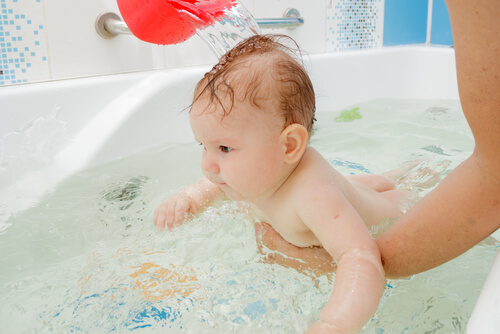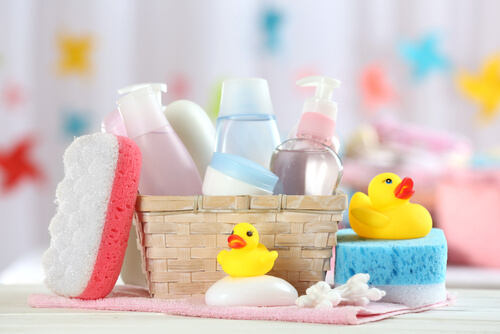How to Take Care of Children's Hair

Children’s hair is something we have to be careful with. Although children’s appearances seem simple, it’s easy to make certain mistakes. As far as taking care of your child, nothing should be taken for granted.
Have you ever stopped to look closely at a child’s hair? Do you remember how yours was? You’ll be surprised to know that not everything is obvious when it comes to hair care in childhood.
Young children’s hair is very delicate, so you can’t treat it like an adult’s hair. What’s ideal is to maintain as much of its natural beauty as possible. Below we’ll provide you with some tips.
Tips to Take Care of Children’s Hair
Use Neutral PH Shampoo
Shampoos for babies with neutral pH clean effectively without drying or leaving residue on the child‘s scalp. In general, this type of shampoo doesn’t contain soap or alcohol, which makes them a safe option for your child’s scalp.
Benefits of Shampoo with Neutral PH
- They clean children’s hair gently, effectively and safely.
- They’re hypoallergenic, which helps protect your baby’s scalp and skin.
- They leave their hair soft and smelling nice.
Learn to Untangle Hair
If your child’s hair gets very tangled, don’t worry because there are several ways to untangle it. First, take good care of the type of comb you’re going to use. Always choose a large one, with widely spaced teeth, so you can untangle the most rebellious knots in a delicate way. This way, you won’t break the child’s hair.
Another trick to untangle children’s hair is to comb it while they’re in the shower. You can even strengthen their hair by using conditioners made specifically for children.

Always start at the ends of the hair especially if they have long hair. After removing the knots, start combing it from top to bottom in a uniform way.
Another strategy is to divide the hair into sections and begin to comb through the ends. It’s also good to know that the best time to do it is when your baby is in the shower or when he has just left the bathroom.
Avoid Perfumes on the Hair or Scalp
Most pediatricians discourage doing this since babies will breathe in the alcohol from the perfume. Also avoid putting on powder because they’ll breathe this in too.
Use Non-Alcoholic Products
If you like to do your child’s hair and style it with hair spray or gel, always try to use products without alcohol or perfume.
And always remember to wash their hair well in order to avoid dandruff and accumulating grease and residue on the scalp.
Shampoos for babies with neutral pH clean effectively without drying or leaving residue on children’s delicate scalp.
Brush Your Child’s Hair Every Day
Brushing a child’s long hair should be as common as brushing their teeth. It’s best to do it in the morning and in the evening. Every day, every person loses hair that is replaced by new ones.
When these strands break off from the scalp they become entangled with the other hairs, hence the importance of brushing their hair at least twice a day.
Tips for Combing Unruly Hair
If your child’s hair is rebellious or thick, brushing it daily will help tame it naturally without the need to resort to chemical products or treatment creams.
To brush rebellious hair you must always comb it with gentle movements that go from the root to the tip and from the forehead to the back of the head.

Use Cold Water
When you wash your children’s hair, use cold water. It isn’t good to use overly hot water because in addition to mistreating their hair, it damages their scalp. If the child doesn’t like cold water, you can use warm water.
As an additional trick, we recommend leaving the warm water to apply a conditioner on your child’s hair. This product should only be used for very rebellious hair.
The warm water will open the pores and let the conditioner work. Let the conditioner sit for at least 1 minute and carefully rinse it with warm water.
Finally, we recommend having a good hairdresser. Bad haircuts or treatments can have difficult consequences to repair. This can harm your child even in adulthood, because sometimes these damages are hard to fix over time.
This text is provided for informational purposes only and does not replace consultation with a professional. If in doubt, consult your specialist.








